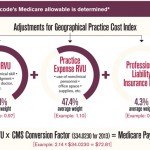Timothy Laing, MD, a professor and rheumatologist at Michigan Medicine at the University of Michigan in Ann Arbor, will once again represent the ACR on the American Medical Association’s (AMA) Relative Value System Update Committee (RUC). His most recent selection represents the third time he has served in this rotating role on the committee.
“The RUC represents the entire medical profession and is the primary advisory committee represented by each of the 109 specialty societies seated in the AMA House of Delegates,” says ACR Executive Vice President Steven Echard, IOM, CAE. “It is an immense accomplishment for the ACR to have a RUC member who can voice the crucial role of internal medicine and the technical role in the house of medicine.”
The Centers for Medicare & Medicaid Services (CMS) uses the relative value scale to decide how physicians should be paid for their services, based on the resource costs to provide them. The RUC is charged with helping determine these values.
“We are the stewards of public resources,” says Dr. Laing. “In aggregate, CMS spends more than $725 billion per year on physician services.1 We help establish the benchmarks for how physician services are valued relative to one another.”
Code Review
The process begins when the RUC is charged with reviewing new and updated Common Procedural Technology (CPT) codes, the identifiers used to describe the medical procedures and services offered by practitioners and used by health insurers (public and private), billers, medical guideline developers, educators and more to describe the work clinicians do to serve patients.
Three times each year, the AMA’s CPT Editorial Panel convenes meetings at which the 31 members of the RUC are asked to review the approximately 10,000 CPT codes and determine the resources required to provide the described services. Technology and improvements in efficiency can alter the resource demands of any given service.
The first step involves surveying member societies that use or will use a given code, asking them detailed questions to understand how the code is or will be implemented. The RUC then compares the CPT codes to others in a cross-referencing process that helps the committee arrive at a relative value unit, Dr. Laing says.
The RUC considers physician work, practice expense and the cost of professional liability insurance when evaluating the relative value unit for a particular service. Physician work accounts for an average of 51% of the total relative value for each service, practice expense is roughly 45%, and liability insurance makes up the remaining 4%.
These relative value units are then multiplied by a monetary conversion factor determined by CMS, taking into account the variability of resource costs depending on where in the country services are performed.
“We’re estimating what services are worth relative to what is already valued, and it’s important to establish the precision of those values,” Dr. Laing says.
Once the committee determines the value of a CPT code, it sends a recommendation to CMS. The agency accepts most of the committee’s recommendations but disagrees about 20% of the time, Dr. Laing says. For example, RUC recommended a higher value for in-office dual-energy X-ray absorptiometry scans than the CMS ultimately implemented.
A Seat at the Table
RUC members must stay impartial, which sometimes means recusing themselves from making recommendations for codes used by their society or field. But as a member on a rotating seat, Dr. Laing is able to serve as an advisor in the off-years between serving on the RUC itself. In that role, he can work with other ACR leaders to help advocate during the RUC process.
Volunteering for the committee is an investment of significant time and energy, Dr. Laing adds, but it helps ensure that rheumatology and the ACR maintain a seat at the table. It also helps him stay current on national payment policies and build relationships, which often lead to ACR involvement in other important efforts on behalf of rheumatologists and medicine more broadly. For example, his work with the AMA has connected him to a variety of ad hoc coalitions and led to his participation in the American College of Physicians Subspecialty Advisory Group on Socioeconomic Affairs.
The RUC seat also fosters goodwill for the ACR by demonstrating that the society is willing and able to take an active role in the medical community.
“Overall, the goal is sustainability of our profession,” says Dr. Laing, who has practiced for 31 years. “As my generation retires, our workforce is going to be woefully short. We know students choose professions at least in part based on economics. We need to create a sustainable model so that our workforce is equivalent to the demand. I’m trying to help the society as best I can.”
Kelly April Tyrrell writes about health, science and health policy. She lives in Madison, Wis.
Reference
- Centers for Medicare and Medicaid Services. CMS Office of the Actuary Releases 2018 National Health Expenditures. https://www.cms.gov/newsroom/press-releases/cms-office-actuary-releases-2018-national-health-expenditures. Published Dec. 5, 2019. Accessed March 2, 2020.

